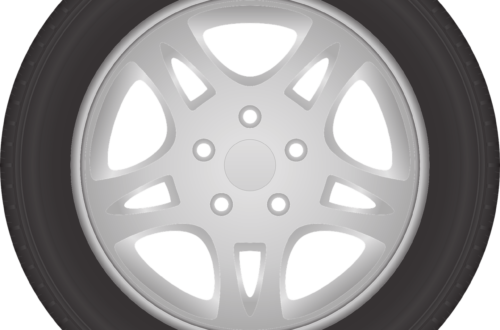If you’ve ever experienced a flat tire or uneven wear on your tires, you know how important proper tire inflation is. Ensuring that your tires are inflated to the correct pressure not only extends their lifespan but also enhances your vehicle’s performance and fuel efficiency. In this article, we will explore some essential tips and techniques for properly inflating your tires, so you can hit the road with confidence and peace of mind.

This image is property of images.pexels.com.
Importance of Proper Tire Inflation
Safety
Proper tire inflation is crucial for ensuring your safety on the road. When your tires are properly inflated, they can maintain better traction with the road surface, reducing the risk of accidents, especially during sudden stops or turns. Underinflated tires can affect your vehicle’s handling and increase the chances of skidding or hydroplaning, particularly in wet or icy conditions. By maintaining the recommended tire pressure, you can greatly improve the safety of your vehicle and protect yourself and your passengers.
Fuel Efficiency
Did you know that proper tire inflation can also help save you money on fuel? When your tires are underinflated, they can create unnecessary resistance, causing your engine to work harder and burn more fuel. In fact, studies have shown that underinflated tires can decrease fuel efficiency by up to 3%. By maintaining the recommended tire pressure, you can optimize your vehicle’s fuel efficiency, reducing your carbon footprint and saving money at the pump.
Tire Longevity
Your tires are a significant investment, and proper tire inflation can help extend their lifespan. Underinflated tires can cause uneven wear, leading to premature tire damage and the need for more frequent replacements. On the other hand, overinflated tires can also lead to excessive wear in the center of the tread, reducing their overall lifespan. By ensuring that your tires are properly inflated, you can maximize their longevity, saving you money in the long run.
Better Vehicle Performance
Proper tire inflation is essential for optimal vehicle performance. When your tires are at the correct pressure, your vehicle will handle better, accelerate smoothly, and provide a more comfortable ride. Underinflated tires can lead to sluggish acceleration, decreased maneuverability, and increased rolling resistance. Conversely, overinflated tires can result in a harsh and uncomfortable ride. By maintaining the recommended tire pressure, you can enjoy a smoother, safer, and more enjoyable driving experience.
Understanding Tire Pressure
Recommended Tire Pressure
Each vehicle has a specific tire pressure recommendation, which can typically be found on a sticker located on the driver’s side door jamb or in the owner’s manual. It is important to note that the recommended tire pressure may vary depending on the vehicle’s weight distribution and the type of tires used. Refer to the manufacturer’s guidelines to determine the correct tire pressure for your specific vehicle.
Checking Manufacturer’s Guidelines
To ensure accuracy in tire pressure, it’s essential to refer to the manufacturer’s guidelines. These guidelines provide the recommended tire pressure based on various factors, such as the vehicle’s weight, load capacity, and tire size. Following these guidelines will help you maintain the correct tire pressure, optimizing your vehicle’s performance and safety.
Importance of Cold Tire Pressure
When checking your tire pressure, it is crucial to do so when the tires are cold. Cold tire pressure refers to the pressure of the tires before they have been driven for a significant distance or exposed to external heat sources. Tire pressure can increase as the tires heat up, providing an inaccurate reading. By checking the tire pressure when the tires are cold, you ensure that the pressure measurement is accurate and reflective of the recommended cold tire pressure.
Ensuring Accuracy in Tire Pressure
Use a Reliable Tire Pressure Gauge
Investing in a reliable tire pressure gauge is essential for accurate readings. There are various types of tire pressure gauges available, including digital, dial, and stick gauges. Choose one that suits your preference and provides consistent and accurate measurements. Remember to keep the gauge in good condition to ensure reliable readings.
Check the Gauge Calibration
Periodically, it is essential to check the calibration of your tire pressure gauge to ensure accurate readings. You can do this by comparing the measurements from your gauge with a known accurate gauge or by taking it to a professional for calibration. Calibrating your gauge regularly helps maintain its accuracy, allowing you to trust the readings it provides.
Check for Leaks or Damage
Before checking the tire pressure, visually inspect the tires for any signs of leaks or damage. Look for cuts, punctures, bulges, or any other abnormalities that may affect tire pressure. If you notice any such issues, it is essential to have them addressed promptly to avoid compromising your safety and the performance of your tires.
Verify Values with a Secondary Gauge
To ensure the accuracy of your tire pressure readings, it is advisable to verify the values with a secondary gauge. Using a different gauge provides an additional reference point, minimizing the chances of erroneous readings. Consistently comparing measurements from multiple gauges helps instill confidence in the accuracy of the tire pressure readings.
When to Check Tire Pressure
At Least Once a Month
Regularly checking your tire pressure is essential for maintaining optimal performance. It is recommended to check the tire pressure at least once a month, even if your tires appear to be in good condition. Changes in ambient temperature and natural tire pressure loss over time can affect your tire pressure, so regular monitoring is crucial.
Before Long Trips
Before embarking on a long road trip, it is crucial to check your tire pressure. Longer drives can increase the tire temperature, leading to an increase in pressure and potentially causing overinflation. By checking your tire pressure before a long trip, you can ensure that your tires are properly inflated and avoid any issues during your journey.
After Extreme Temperature Changes
Extreme temperature changes, such as transitioning from hot to cold weather or vice versa, can affect your tire pressure. As temperatures fluctuate, the air inside your tires expands or contracts, influencing the tire pressure. To maintain accuracy and safety, it is important to check your tire pressure after experiencing extreme temperature changes.
After Hitting a Pothole or Curb
Impacts from hitting a pothole, curb, or other road hazards can potentially affect your tire pressure. These impacts can cause leaks, punctures, or damage to your tires, leading to air loss and a decrease in tire pressure. After encountering such road hazards, it is crucial to check your tire pressure to ensure that no significant damage or loss of pressure has occurred.

This image is property of images.pexels.com.
Tire Pressure Inflation Steps
Park on Level Ground
Before checking or adjusting your tire pressure, it is important to park your vehicle on a level surface. This ensures that the weight distribution is even across all tires, providing accurate readings and proper inflation.
Remove Valve Stem Caps
To access the valve stems, which are located on each tire, remove the valve stem caps. These caps protect the valve stem from dust and debris and prevent air loss. Set the caps aside in a safe place to avoid misplacing them.
Attach the Tire Pressure Gauge
Attach the tire pressure gauge firmly onto the valve stem. Ensure a tight seal to prevent air leakage, which could lead to inaccurate readings. Hold the gauge in place until the reading is stable.
Read the Pressure Reading
Once the gauge reading stabilizes, take note of the pressure reading displayed. Check if it corresponds to the recommended tire pressure specified by the vehicle manufacturer. If the pressure is in line with the recommendation, you can proceed to replace the valve stem caps. If not, adjustments are necessary.
Add or Release Air
To inflate the tire, use an air compressor or visit a nearby gas station with tire inflation services. If the tire pressure is too high, use a tire pressure gauge or a pointed object to release air until it reaches the recommended pressure. It is crucial to release air gradually to avoid excessive deflation and to recheck the pressure periodically.
Recheck Pressure
After adding or releasing air, it is important to recheck the tire pressure to ensure that it matches the recommended level. Repeat the process of attaching the gauge and confirming the pressure reading until the desired tire pressure is achieved. Remember to replace the valve stem caps securely once you have finished adjusting the tire pressure.
Replace Valve Stem Caps
After adjusting the tire pressure and confirming the desired levels, securely screw the valve stem caps back onto each valve stem. This step ensures that the valve stems are protected against dirt, debris, and air loss, helping to maintain accurate tire pressure.
Considerations for Different Vehicles
Car
For cars, following the manufacturer’s recommended tire pressure is crucial. The recommended pressure, based on the vehicle’s weight, tire size, and load capacity, ensures optimal performance, handling, and safety. Check the owner’s manual or the tire information placard located inside the driver’s side door jamb for the specific recommended tire pressure for your car.
SUV/Truck
SUVs and trucks often have different tire pressure recommendations compared to cars due to their higher weight and load-carrying capacity. It is important to consult the vehicle owner’s manual or the tire information placard to determine the recommended tire pressure for your SUV or truck. Ensuring that your tires are properly inflated will help maintain stability, control, and adequate load support.
Motorcycle
Maintaining proper tire pressure is especially important for motorcycles, as they have only two tires. Insufficient tire pressure can affect traction, handling, and balance, potentially leading to accidents. Consult the motorcycle manufacturer’s guidelines or the owner’s manual for the recommended tire pressure. Regularly check and adjust the tire pressure to ensure optimal motorcycle performance and safety.
Bicycles
Proper tire inflation is also crucial for bicycles. Underinflated tires can lead to increased rolling resistance, discomfort, and inefficient pedaling. On the other hand, overinflated tires can result in a harsh ride, reduced traction, and increased risk of punctures. Check the manufacturer’s specifications or the tire sidewall for the recommended tire pressure range for your bicycle. Regularly check and adjust the tire pressure to achieve optimal performance and comfort during your rides.

This image is property of images.pexels.com.
Effects of Underinflation
Poor Traction
Underinflated tires can result in reduced traction due to their larger contact patch with the road surface. The increased friction and heat generated can cause the tires to lose grip, especially on wet, icy, or slippery surfaces. This lack of traction can lead to longer braking distances, reduced stability in turns, and an increased risk of accidents.
Irregular and Excessive Wear
Underinflation causes the tire sidewalls to flex excessively, resulting in uneven tire wear. The outer edges of the tread can wear out faster than the center, leading to reduced tire lifespan and potentially compromising your safety. Additionally, underinflated tires are more prone to damage from road hazards, as the lack of proper pressure makes them vulnerable to impacts.
Reduced Load-Carrying Capacity
Underinflated tires cannot support heavy loads as effectively as properly inflated tires. This can lead to premature tire failure, increased rolling resistance, and potential damage to your vehicle. Tires that are not inflated to the recommended pressure are more likely to overheat and experience structural problems, compromising their load-carrying capacity.
Increased Risk of Tire Failure
Underinflated tires are more susceptible to blowouts and other forms of tire failure. The excessive flexing of the tire sidewalls generates heat, which can cause the internal components of the tire to degrade. This degradation weakens the tire’s structure and increases the likelihood of sudden tire failure while driving, posing a significant safety risk.
Effects of Overinflation
Uncomfortable Ride
Overinflated tires can result in a harsh and uncomfortable ride. The increased air pressure causes the tires to have a smaller contact patch with the road surface, leading to a rougher and bumpier driving experience. The excessive rigidity can transmit more vibrations to the vehicle, making the ride less pleasant for the occupants.
Reduced Traction
Similar to underinflation, overinflated tires can also lead to reduced traction. The smaller contact patch decreases the tire’s ability to grip the road surface, particularly in wet or slippery conditions. This can result in longer braking distances, decreased stability in turns, and an overall compromised ability to safely navigate various road surfaces.
Uneven Tire Wear
Overinflated tires wear unevenly across the center of the tread, as the tire’s contact with the road is primarily concentrated on that area. This uneven wear pattern can lead to reduced tire lifespan, increased susceptibility to punctures and bulges, and potential tire failure. Regularly checking and adjusting your tire pressure can help prevent these issues and ensure even wear.
Increased Risk of Tire Damage
Overinflated tires are more susceptible to damage from road hazards, such as potholes or debris. The higher air pressure makes the tire less flexible, making it more prone to impact damage. Over time, these impacts can lead to sidewall bulges, tread separations, or even an increased risk of blowouts. Proper tire inflation helps protect your tires against unnecessary damage.
Reduced Braking Performance
Overinflated tires can negatively impact your vehicle’s braking performance. The decreased contact patch with the road surface reduces the tire’s ability to grip and generate traction during braking. This can result in longer braking distances and compromised safety, especially in emergency situations where reliable braking is essential.
When to Seek Professional Help
Significant Tire Pressure Loss
If you consistently experience significant tire pressure loss even after adjusting the pressure or filling the tires with air, it is advisable to seek professional help. There may be underlying issues such as leaks, tire damage, or valve problems that require the expertise of a trained technician.
Repeated Tire Pressure Issues
If you find yourself repeatedly dealing with tire pressure issues, such as frequent deflation or overinflation even after adjusting the pressure correctly, it may be a sign of a larger problem. Seeking assistance from a professional can help diagnose and address any potential issues, ensuring that your tires maintain accurate and consistent pressure.
Unusual Tire Wear Patterns
Observe your tire tread regularly to check for any unusual wear patterns. Uneven wear across the tread can indicate alignment or suspension issues, which can affect tire pressure and performance. If you notice any abnormal wear, consult a professional to inspect your tires and vehicle for proper diagnosis and resolution.
Uncertain about the Correct Tire Pressure
If you are unsure about the correct tire pressure for your vehicle or need assistance with adjusting the pressure, it is always recommended to seek professional help. Professional technicians have the knowledge and experience to provide accurate tire pressure recommendations and ensure proper inflation to maintain optimal performance and safety.
Maintaining Tire Pressure
Weekly Visually Inspections
Performing weekly visual inspections of your tires can help identify any signs of damage, leaks, or changes in tire pressure. Look for cuts, punctures, bulges, or any other abnormalities and address them promptly to prevent further issues. By regularly inspecting your tires, you can catch potential problems early on and maintain proper inflation.
Regularly Check Valve Stem Caps
Valve stem caps are crucial for protecting the valve stems from dust, debris, and air loss. It is essential to regularly check the condition of the valve stem caps and ensure that they are securely fastened. Damaged or missing valve stem caps should be replaced promptly to avoid potential air leaks and maintain accurate tire pressure.
Monitor Tire Pressure During Season Changes
As temperatures fluctuate during season changes, your tire pressure can be affected. Cold weather causes tire pressure to drop, while hot weather can increase tire pressure. Regularly monitor your tire pressure during these transitions and adjust the pressure accordingly to maintain the recommended levels. This practice helps optimize performance and safety throughout different climate conditions.
Keep Tires Properly Balanced
Regular tire balancing is essential for maintaining proper inflation. Unbalanced tires can lead to uneven tire wear, vibrations, and reduced handling performance. During routine tire maintenance, such as tire rotations or replacements, have your tires balanced by a professional. Ensuring that your tires are properly balanced contributes to maintaining accurate tire pressure and prolonging tire life.
In conclusion, proper tire inflation is crucial for safety, fuel efficiency, tire longevity, and vehicle performance. Understanding tire pressure and following the manufacturer’s guidelines is the first step in ensuring accuracy. Regularly checking tire pressure, especially before long trips or after encountering significant temperature changes or road hazards, is essential. By following the proper steps for tire pressure inflation and considering the specific requirements for different vehicles, you can optimize performance, prevent tire damage, and enhance safety. If you experience repetitive issues, unusual tire wear, or uncertainty regarding tire pressure, seeking professional help is advisable. Regular maintenance tasks such as visually inspecting tires, checking valve stem caps, monitoring pressure during season changes, and maintaining tire balance further contribute to proper tire inflation and overall tire health. By prioritizing proper tire inflation techniques, you can enjoy a safer, more fuel-efficient, and smoother driving experience.





